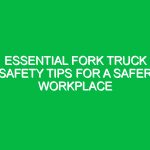Understanding Free Editable Checklist Template Word in HSE
In the realm of Health, Safety, and Environment (HSE), the significance of meticulous planning and execution cannot be overstated. One of the essential tools that facilitate this process is the **free editable checklist template word**. This tool serves as a foundational element in ensuring that Safety protocols are not just in place, but are actively monitored and updated.
The concept of a checklist is straightforward: it is a document that outlines tasks, items, or steps that need to be completed. When tailored for the HSE domain, these checklists help organizations comply with Safety Regulations, enhance operational efficiency, and ultimately protect the health and well-being of employees and the environment.
In this article, we will explore the key aspects of free editable checklist templates within the HSE context, understand their components, and delve into the Best Practices for utilizing them effectively.
Key Components of Free Editable HSE Checklist Templates
To maximize the utility of a free editable checklist template word, it is vital to understand its fundamental components. These templates typically include the following elements:
- Title: Clearly defining the purpose of the checklist, such as “Site Safety Inspection Checklist” or “Environmental Compliance Checklist.”
- Date: An area to record when the checklist is completed, ensuring that records are current and relevant.
- Location: Specifying the location or site of the assessment to maintain clarity and organization.
- Tasks and Items: A detailed list of Safety Measures or environmental practices that need to be checked or completed.
- Check Boxes: Allowing for easy marking of completion or compliance.
- Notes Section: A space for comments or observations that can provide context or detail on the checklist items.
- Signatures: A place for the inspector’s signature, which adds a layer of accountability.
Each of these components plays a crucial role in ensuring that the checklist is practical and effective.
Benefits of Using Free Editable HSE Checklist Templates
Adopting free editable checklist templates in the HSE sector offers a plethora of Benefits. Here are some of the most notable advantages:
- Improved Compliance: Checklists help organizations adhere to health and safety regulations, minimizing the risk of legal issues and fines.
- Increased Efficiency: Templates streamline processes, allowing for quicker assessments and ensuring that nothing falls through the cracks.
- Enhanced Communication: Utilizing standardized checklists fosters better communication among team members about safety practices and expectations.
- Documentation: Checklists create a paper trail that can be crucial during audits or inspections, showcasing due diligence in Safety Measures.
- Customizable: Free editable checklist templates can be tailored to fit the specific needs and requirements of different organizations, industries, and projects.
The adaptability and practicality of these templates make them a must-have in any HSE-focused organization.
Best Practices for Creating and Implementing HSE Checklists
Creating an effective HSE checklist involves more than simply listing tasks. Here are some Best Practices to ensure that your free editable checklist template word is comprehensive and functional:
1. Involve Stakeholders
Engage team members from various levels of the organization when creating the checklist. Their insights can provide valuable perspectives on potential Hazards and necessary safety measures. For instance, frontline workers may highlight risks that management may overlook.
2. Keep It Simple
Avoid overcomplicating the checklist. Use clear and concise language to ensure that all users can easily understand and follow the guidelines. A cluttered or complex checklist can lead to confusion and mistakes.
3. Regularly Update the Checklist
As regulations evolve and new safety Standards emerge, it is essential to keep checklists current. Regular reviews should be scheduled to incorporate changes and improvements based on past experiences.
4. Train Employees on Usage
Providing Training on how to effectively use the checklist can enhance its effectiveness. Employees should understand the checklist’s purpose, the risks involved, and how to report issues noted during inspections.
5. Analyze and Act on Findings
After completing a checklist, it is crucial to review the findings and take appropriate action. If any Hazards or deficiencies are identified, address them promptly to maintain a safe working environment.
Real-Life Application: Case Study Example
To illustrate the impact of free editable checklist templates in the HSE field, let’s consider a hypothetical case: a construction company implementing a site safety inspection checklist.
The company decided to adopt a free editable checklist template that included sections for assessing Personal Protective Equipment (PPE), fall hazards, and machinery safety. By involving site supervisors and workers in the checklist’s creation, they ensured that all relevant safety concerns were addressed.
During the first month of implementation, the checklist revealed several instances of improper PPE usage and unguarded machinery. With this data, the company organized targeted training sessions and remedial actions, significantly reducing workplace incidents.
This case exemplifies how effectively utilizing a free editable checklist template word can lead to actionable insights that enhance safety and compliance.
Regulations and Standards Impacting HSE Checklists
Several key regulations govern health and safety practices across various industries. Understanding these regulations is essential for creating effective checklists. For instance:
- OSHA Standards: In the United States, the Occupational Safety and Health Administration (osha) establishes guidelines that organizations must follow to ensure Workplace Safety. Checklists can help ensure compliance with these standards.
- ISO 45001: This international standard outlines the requirements for an Occupational Health and safety management system. Utilizing checklists can aid organizations in aligning their practices with ISO 45001.
- Environmental Protection Laws: Various local and federal laws regulate environmental practices. Checklists can help organizations assess compliance with these regulations, ensuring that environmental protocols are followed.
By incorporating regulatory standards into checklist design, organizations can ensure that they not only meet legal requirements but also foster a culture of safety and accountability.
Conclusion
In conclusion, the free editable checklist template word is an invaluable tool in the HSE domain, promoting safety, compliance, and efficiency. By understanding its components, benefits, and best practices, organizations can leverage these templates to create a safer working environment.
As we have explored, the integration of these checklists into daily operations is not just about checking boxes; it is about fostering a proactive safety culture. By engaging employees, updating checklists regularly, and acting on findings, organizations can ensure that safety remains a top priority.
Investing time and resources into developing effective HSE checklists is a step towards a safer and more compliant workplace. The commitment to health, safety, and environmental Sustainability will ultimately lead to improved organizational success and employee well-being.


